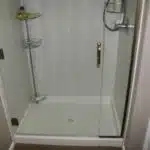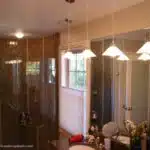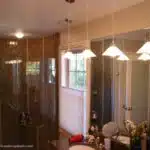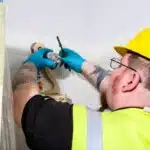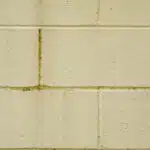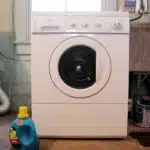Renovating a bathroom can be an exciting and rewarding project, but it can also be quite expensive. One way to freshen up the space without breaking the bank is by renewing your shower with epoxy paint. This versatile material can transform an outdated or damaged shower into a sleek and modern oasis in just a few simple steps.
Epoxy paint is a popular choice for homeowners who want to update their showers because it’s durable, waterproof, and easy to clean. With a wide range of colors and finishes available, you can customize your shower to fit your personal style and taste. In this article, we’ll explore the benefits of using epoxy paint for your shower renovation project and provide step-by-step instructions on how to complete the process successfully. Whether you’re a seasoned DIYer or new to the world of home renovations, this guide will help you achieve professional-looking results at a fraction of the cost of hiring a contractor.
Benefits Of Using Epoxy Paint For Shower Renovation
Renovating your shower with epoxy paint can bring a number of advantages to the table. Unlike regular paint, epoxy is highly durable and resistant to moisture, making it ideal for use in wet environments like bathrooms. This means that once you’ve painted your shower with epoxy, you won’t have to worry about constant touch-ups or reapplications.
Another advantage of using epoxy paint for shower renovation is that it can give your shower a fresh, updated look without having to go through the hassle and expense of a full-scale renovation. Epoxy comes in a variety of colors and finishes, so you can choose the one that best fits your style and preferences.
Of course, as with any renovation project, there are also some disadvantages to consider when using epoxy paint on your shower walls. For one thing, it can be difficult to apply properly if you don’t have experience working with this type of material. Additionally, it’s important to properly prepare your shower walls before applying the epoxy in order to ensure that it adheres correctly and doesn’t peel or chip over time. However, with careful planning and attention to detail, these drawbacks can be easily overcome.
To get started on renovating your shower with epoxy paint, the first step is preparing the surface properly.
Preparing Your Shower For Epoxy Paint
Now that you are aware of the benefits of using epoxy paint for shower renovation, it’s time to prepare your shower surface for painting. Shower surface preparation is one of the most crucial steps in achieving a successful epoxy paint application. This step ensures that the surface is free from dirt, oil, grime and any other contaminants that may hinder proper adhesion of the paint.
Cleaning techniques for your shower depend on the type of material used in its construction. For tile showers, use a scrub brush and a mixture of water and trisodium phosphate (TSP) to remove soap scum and mold. For fiberglass showers, mix baking soda with water to create a paste that can be applied with a soft-bristled brush. Rinse thoroughly with clean water after cleaning.
To ensure successful application, follow these steps:
- Remove all hardware such as faucets, handles and showerheads before painting
- Cover surrounding surfaces such as walls and floors with painter’s tape or drop cloths
- Use sandpaper to scuff up the surface slightly before cleaning
- Clean your shower thoroughly using appropriate cleaning techniques
Following these steps will ensure proper adhesion of your epoxy paint and prevent peeling or chipping over time. Now that you have completed this crucial step, it’s time to move on to choosing the right epoxy paint for your shower.
Choosing The Right Epoxy Paint For Your Shower
When it comes to renewing your shower with epoxy paint, choosing the right type of paint is critical. There are two main types of epoxy paint to consider: water-based and solvent-based. Water-based epoxy paint is a popular choice because it is easy to apply and has a low odor. Solvent-based epoxy paint, on the other hand, is more durable and resistant to chemicals and abrasions.
Once you have decided on the type of epoxy paint you want to use, it’s time to choose a brand. Some popular brands include Rust-Oleum, KILZ, and Epoxy-Coat. Each brand offers various colors and finishes, so it’s important to choose one that matches your desired look. It’s also essential to read reviews from other DIYers who have used the product before making a final decision.
To help you select the right brand of epoxy paint for your shower renovation project, refer to the table below:
| Brand | Type | Color Options | Finish Options |
|---|---|---|---|
| Rust-Oleum | Water-based | 10+ | Matte or Glossy |
| KILZ | Solvent-based | 5 | Satin or Glossy |
| Epoxy-Coat | Solvent-based | 20+ | Matte or High-Gloss |
Choosing the right type and brand of epoxy paint will ensure that your shower renovation project is successful. Keep in mind that preparation is key when using epoxy paint as it requires a clean surface for proper adhesion. In the next section, we will discuss the tools and materials you’ll need for this project.
Tools And Materials You’ll Need
- To renew a shower with epoxy paint, you’ll need a paint roller, a drop cloth, sandpaper, and a primer.
- Additionally, you’ll need to wear protective gear such as gloves, a mask, and a respirator.
- For prepping the surface, you’ll need a brush, tape, a stirring stick, a bucket, and a stirrer.
- Lastly, to apply the paint, you’ll need a paint tray, a sponge, and a brush.
Epoxy Paint
Epoxy paint is a popular choice for renovating showers due to its durability and water resistance. However, there are alternative options available that may be more suitable depending on your specific needs. Acrylic urethane, for example, is a good alternative for those who want a less toxic option that dries quickly and has a longer lifespan than traditional epoxy paints. It also provides excellent adhesion and resists chipping.
When it comes to applying epoxy paint, proper preparation is key. Clean the surface thoroughly and remove any old grout or caulking before beginning the application process. It is recommended to use an etching solution to prepare the surface and ensure maximum adhesion. Follow the manufacturer’s instructions on mixing the paint and apply it evenly using a roller or brush. Be sure to let each coat dry completely before adding another layer.
There are different techniques you can use when applying epoxy paint, such as spraying or rolling it on. Spraying can provide an even coating with no brush marks but requires specialized equipment and can be messy. Rolling is a more straightforward technique that does not require special equipment but may leave behind visible lines or bubbles if not done correctly. Whichever technique you choose, make sure to follow all safety instructions provided by the manufacturer and wear protective gear such as gloves and masks to prevent exposure to fumes or skin irritation.
Paint Roller
Now that we have discussed the benefits and preparation for epoxy paint, let’s move on to the tools and materials you’ll need for this project. One of the essential items you’ll need is a paint roller. A good quality paint roller can make all the difference in achieving a smooth and even coating.
When choosing the right paint roller, consider the type of surface you will be painting. A textured or rough surface may require a thicker nap roller, while a smoother surface may only need a thinner nap. It’s also important to choose the right material for your roller, with options such as foam, synthetic fibers or natural fibers like lambswool available.
There are different paint roller techniques that can be used when applying epoxy paint. The most common technique is rolling back and forth in a “W” pattern to evenly distribute the paint. Another technique is called “boxing,” which involves pouring small amounts of epoxy onto the surface and then using a roller to blend them together in overlapping sections. Whatever technique you choose, be sure to apply even pressure throughout and avoid overworking the epoxy, which can lead to bubbles or an uneven finish.
Step-By-Step Guide To Epoxy Painting Your Shower
Gearing up to give your shower a makeover using epoxy paint? Great choice! This type of paint is extremely durable and can withstand heavy usage, making it ideal for high-moisture areas like bathrooms. Before you start the epoxy paint application process, it’s important to take a few necessary precautions. Here’s what you need to do:
- Clear out the shower area: Remove all items from the shower stall, including soap dishes, shelves, and faucets.
- Clean the surface thoroughly: Use a strong bathroom cleaner to remove any dirt, grime, or soap scum buildup from the tiles or fiberglass.
- Sand the surface: Use fine-grit sandpaper to roughen up the surface slightly so that it can better absorb the epoxy paint.
Once you’ve taken these steps and are ready to begin painting, follow these steps:
- Mix the epoxy paint according to package instructions.
- Apply a thin coat of epoxy paint with a foam roller or brush.
- Allow this first coat to dry completely before applying additional coats as needed.
With your newly painted shower looking fresh and clean, it’s important to keep up with regular maintenance in order to keep it looking great for years to come. Here are some tips for cleaning and maintaining your newly painted shower:
- Avoid using abrasive cleaners or scrub brushes on your new finish as they may scratch or damage it.
- Instead, use a soft cloth and mild bathroom cleaner or vinegar solution for regular cleaning.
- If you notice any chips or scratches in the finish over time, touch them up with additional epoxy paint as needed.
By following these simple maintenance tips, you can ensure that your newly painted shower stays looking great for years to come!
How To Clean And Maintain Your Epoxy-Painted Shower
To ensure the longevity of your newly-epoxy painted shower, it’s important to implement proper cleaning methods. Firstly, avoid using abrasive cleaners and harsh chemicals as they can cause damage to the paint. Instead, opt for mild soap and water, or a vinegar and water solution. Be sure to rinse thoroughly with warm water after cleaning to prevent any residue buildup.
Another way to prevent damage is by keeping sharp objects away from the painted surface. Avoid using abrasive scrubbers or brushes that can scratch the epoxy paint. Additionally, try to avoid dropping heavy objects on the shower floor as this can cause cracks or chips in the paint.
Finally, regular maintenance is key in maintaining a professional-looking finish. Keep an eye out for any signs of wear and tear such as peeling or cracking and address them immediately. By doing so, you’ll not only extend the life of your epoxy-painted shower but also keep it looking new for years to come.
Moving forward, let’s dive into some tips for achieving a professional-looking finish on your newly-epoxy painted shower.
Tips For Achieving A Professional-Looking Finish
To achieve a professional-looking finish when renewing your shower with epoxy paint, there are certain technique refinements that you should keep in mind. Firstly, it is essential to clean the surface thoroughly before applying the epoxy paint. Any dirt or grime left on the surface can affect the adhesion of the paint and result in an uneven finish. Use a high-quality degreaser and follow up with a thorough rinse.
Another technique refinement that can make a significant difference in the final outcome is to apply multiple thin coats of epoxy paint instead of one thick coat. This will ensure better coverage, reduce dripping, and provide a more even finish. Be sure to allow sufficient drying time between each coat as recommended by the manufacturer.
When it comes to product recommendations, always choose high-quality epoxy paint that is specifically designed for showers or bathrooms. Cheaper alternatives may seem appealing initially, but they tend to peel or crack easily over time due to prolonged exposure to moisture and heat. Investing in quality products will save you time and money in the long run and provide you with a durable and long-lasting finish.
Transition: While these tips can help you achieve a professional-looking finish, it’s still important to avoid common mistakes that can ruin your efforts. In the next section, we’ll discuss some of these mistakes and how you can avoid them when epoxy painting your shower.
Common Mistakes To Avoid When Epoxy Painting Your Shower
As you begin the process of epoxy painting your shower, it’s important to be aware of common mistakes that can occur. Avoiding these pitfalls will ensure that your end result is a stunning and durable finish that will last for years to come.
One common mistake to avoid is incorrect preparation of the surface before painting. It’s essential to thoroughly clean the shower and remove any soap scum or residue, as well as any old caulking or grout. Skipping this step can result in an uneven application of the epoxy paint, which will compromise its durability and appearance over time.
Another pitfall to watch out for is rushing through the process. Epoxy paint requires patience and attention to detail. Rushing through steps such as mixing components or applying coats too quickly can lead to poor adhesion and a lackluster finish. Take your time and follow the manufacturer’s instructions carefully to achieve a flawless result.
When working with epoxy paint in a shower, it’s also important to pay extra attention to details such as grout lines and edges. These areas require precise application, and it may take some extra effort or practice to get them right. To help you avoid mistakes in these areas, here are two nested bullet points:
- Use a small brush or roller specifically designed for tight spaces when painting grout lines.
- This will help you achieve even coverage without accidentally getting paint on surrounding tiles.
- When working around edges and corners, use masking tape or painter’s tape as needed.
- This will give you clean lines and prevent accidental smudging or drips on adjacent surfaces.
By taking the time to avoid common mistakes like those listed above, you’ll be able to transform your shower with confidence and enjoy a beautiful finish that lasts for years. In the next section, we’ll discuss tips for working with grout lines and edges specifically.
Working With Grout Lines And Edges
After you’ve finished applying the epoxy paint to your shower, it’s important to maintain the grout lines. Grout maintenance is crucial because it helps prevent mold and mildew buildup. To clean the grout lines, mix equal parts water and vinegar in a spray bottle and generously apply the solution to the grout lines. Allow it to sit for 10-15 minutes before scrubbing with a stiff-bristled brush. Rinse the area with warm water and dry with a clean towel.
Another important aspect of renewing your shower with epoxy paint is edge sealing. Edge sealing protects against moisture penetrating beneath the surface of the paint and causing damage over time. To seal edges, use caulk or silicone sealant around the corners and edges of your shower pan, walls, and any fixtures that may be present. Use a caulking gun for precision application and smooth out any excess caulk with your finger or a damp sponge.
In summary, maintaining grout lines and sealing edges are essential to ensure that your newly painted shower lasts as long as possible. By following these steps, you can keep your shower looking great for years to come. In the next section, we’ll explore some common issues that may arise during this renovation process and how to troubleshoot them effectively.
Troubleshooting Common Issues
So you’ve successfully renewed your shower with epoxy paint, but what happens when issues arise? Don’t worry, it’s not the end of the world. Preventing peeling and avoiding discoloration are two common concerns homeowners have when it comes to epoxy painted showers. However, with a little bit of know-how, these problems can be easily avoided.
To prevent peeling, make sure your shower is properly cleaned and prepared before applying the epoxy paint. If there is any existing paint or residue, remove it using sandpaper or a chemical stripper. Next, ensure that the surface is completely dry before painting. Moisture trapped underneath the paint can cause it to lift and eventually peel off.
Discoloration can occur if you don’t use a high-quality epoxy paint or if the surface isn’t properly prepped before painting. To avoid this issue, choose an epoxy paint specifically formulated for showers and bathrooms. Additionally, make sure that the surface is free of any stains or discoloration before painting. By taking these steps, you’ll be able to enjoy your newly renovated shower for years to come without worrying about peeling or discoloration issues.
Now that you’ve tackled preventing peeling and avoiding discoloration in your shower renovation project let’s talk about adding color and texture to your shower with epoxy paint.
Adding Color And Texture To Your Shower With Epoxy Paint
Color schemes and textured finishes can add an aesthetic appeal to your shower that you never knew was possible. With epoxy paint, you have the ability to customize the color scheme and texture of your shower according to your preference. You can choose from a wide range of colors and textures that complement the overall theme of your bathroom.
When choosing the color scheme for your shower, consider the existing color scheme in your bathroom. If you have neutral tones, opt for a pop of color in your shower with a bright and bold hue. If you have colorful walls, stick to a subdued color scheme for your shower. Textured finishes can also add depth and character to your shower walls. You can go for a smooth finish or add texture with patterns like stripes or polka dots.
Applying textured finishes with epoxy paint is relatively easy. Sand down any rough patches on the wall before applying the first coat. After allowing it to dry, apply a second coat with a textured roller brush, creating the desired pattern as you go along. A third coat may be needed depending on how heavy you want the texture to be.
Incorporating color schemes and textured finishes in your shower is an effortless way to elevate its appearance without breaking the bank. However, while aesthetics are important, safety and comfort should not be overlooked when renovating any part of your home. In the next section, we will discuss how using epoxy paint can enhance safety and comfort in your shower area.
Enhancing Safety And Comfort With Epoxy Paint
Renewing a shower can be compared to giving it a facelift. It is an inexpensive way to enhance safety and comfort in your bathroom without breaking the bank. One way to achieve this is by using epoxy paint. Epoxy paint is increasingly becoming popular in bathroom renovation projects due to its durability, versatility, and affordability.
One of the benefits of using epoxy paint for bathroom floors is that it creates an anti-slip surface, which makes it ideal for showers. This feature enhances safety by reducing the risk of slipping and falling, especially when water spills on the floor. Additionally, epoxy paint is easy to clean and maintain; you don’t have to worry about grout lines or tile cracks harboring bacteria or mold. Another advantage of epoxy painted showers is that they are available in various colors and designs, allowing you to choose the one that best suits your style and preferences.
When choosing the right color for an epoxy painted shower, consider factors such as natural light and existing fixtures in your bathroom. Lighter colors tend to make small bathrooms appear larger, while darker shades create a cozy atmosphere, making large bathrooms feel more intimate. Neutral shades like beige or gray complement almost any fixture color, while bold hues like red or blue add character and personality to your bathroom.
Enhancing safety and comfort with epoxy paint is just one piece of the puzzle. In addition to these benefits, long-term durability and cost savings are also crucial factors when considering home renovation projects. By investing in quality materials like epoxy paint that require minimal maintenance over time, you will save money in the long run while enjoying a safe and comfortable space for years to come.
Long-Term Durability And Cost Savings
When it comes to renovating a shower, homeowners face the dilemma of choosing between upfront costs versus long-term savings. While certain renovation options may seem cheaper initially, they often require more maintenance and upkeep in the long run. In contrast, investing in high-quality materials that are durable can save money over time.
Durability is a crucial factor to consider when renovating a shower. Choosing materials that are durable and resistant to wear and tear will ensure that the shower will last longer with minimal maintenance required. Investing in epoxy paint for your shower walls is an excellent option as it creates a waterproof barrier that lasts for years without deteriorating.
While there may be an upfront cost associated with using epoxy paint for your shower renovation, the long-term savings far outweigh this initial expense. Epoxy paint is not only durable but also low-maintenance, meaning you won’t have to spend a lot of time and money on repairs or replacements down the line. Additionally, epoxy paint comes in various colors and finishes, allowing homeowners to customize their showers without compromising on quality.
In conclusion, when deciding on a shower renovation option, homeowners should consider both durability vs. maintenance and upfront cost vs. long-term savings. Opting for high-quality materials like epoxy paint may come with an initial cost but will result in long-term savings due to their durability and low-maintenance requirements. Next step: let’s explore how epoxy paint compares to other popular shower renovation options.
Epoxy Paint Vs. Other Shower Renovation Options
Cost-wise, epoxy paint is a more affordable alternative to other shower renovation options. Its durability is often superior to other options, making it a popular choice for areas that experience a lot of wear and tear. Epoxy paint also offers a wide range of colors and sheens to choose from, allowing for a variety of aesthetic options. The application of epoxy paint is relatively simple, and it has a minimal odor during and after application. Clean-up is easy, as the paint is water-based and can be cleaned up with soap and water. Epoxy paint is also fire-resistant, water-resistant, and offers UV-resistance as well, making it a safe option for a shower renovation. It also offers flexibility and prevents cracking and poor adhesion.
Cost
If you’re looking for a budget-friendly way to give your shower a new lease on life, epoxy paint might be the solution you’ve been searching for. Compared to other shower renovation options, epoxy paint is significantly cheaper and can even be done as a DIY project, saving you money on professional installation fees.
The cost of renovating a shower can vary greatly depending on factors like the size of the shower and the type of materials used. For example, if you opt for a complete bathroom remodel with high-end materials, the cost can easily reach tens of thousands of dollars. However, if you choose to go with epoxy paint, you can expect to pay anywhere from $50-$150 for materials and supplies – a fraction of the cost of other renovation options.
Of course, while epoxy paint is significantly cheaper than other shower renovation options, it may not be the best choice for everyone. If your shower requires extensive repairs or has significant damage that needs addressing before painting can begin, it’s important to factor in those costs as well. Ultimately, by weighing the pros and cons and considering your individual needs and budgetary constraints, you’ll be able to make an informed decision about whether or not epoxy paint is right for your shower renovation project.
Durability
Another factor to consider when deciding between epoxy paint and other shower renovation options is durability. While epoxy paint can provide a cost-effective solution for updating the look of your shower, it may not be as durable as other materials. Over time, the paint can chip or peel, which can result in an unsightly appearance and require touch-ups or even a full reapplication.
One of the benefits of other shower renovation options, such as tile or acrylic surrounds, is their durability. These materials are designed to withstand daily use and are less likely to experience wear and tear than painted surfaces. However, it’s important to note that these options can be significantly more expensive than epoxy paint and may require professional installation.
Ultimately, when deciding between epoxy paint and other shower renovation options, it’s important to weigh the benefits of cost effectiveness versus durability. While painted surfaces may require more maintenance over time, they can provide a quick and affordable update for those on a budget. On the other hand, more expensive materials like tile or acrylic surrounds may be worth the investment for those seeking a long-lasting solution with minimal upkeep required.
Aesthetics
When it comes to updating your shower, there are many factors to consider beyond just cost and durability. Aesthetics play a key role in creating a space that is both functional and visually appealing. Epoxy paint offers a range of color options that can be customized to fit your personal style, from bright and bold to subtle and understated. Additionally, epoxy paint finish options vary from glossy to matte, allowing you to choose the level of sheen that best suits your design preferences.
However, it’s important to note that while epoxy paint can offer a cost-effective solution for updating the look of your shower, it may not provide the same level of high-end aesthetics as other options like tile or acrylic surrounds. These materials offer a wide range of styles and finishes that can transform your space into a spa-like oasis. From classic subway tile to modern geometric patterns, there are countless options available to suit any design aesthetic.
When considering aesthetics as a factor in choosing between epoxy paint and other shower renovation options, it’s important to prioritize your personal style preferences and budget constraints. While painted surfaces can provide an affordable way to update the look of your space with customizable color and finish options, more expensive materials like tile or acrylic surrounds offer higher-end aesthetics that may be worth the investment for those seeking a truly luxurious shower experience. Ultimately, the choice between epoxy paint and other shower renovation options will depend on individual priorities and goals for their home renovation project.
Frequently Asked Questions About Epoxy Paint For Showers
Renewing a shower with epoxy paint is an excellent way to give your bathroom a fresh and modern look. You’ll be amazed at how easy it is to apply, and the results can last for years. With just a few DIY techniques and some maintenance tips, you can have a beautiful shower that looks like new again.
One of the most common questions people ask about epoxy paint for showers is whether it’s durable enough to withstand daily use. The answer is yes! Epoxy paint is incredibly durable and resistant to wear and tear. It can withstand water, steam, and harsh cleaning chemicals without peeling or chipping away.
Another frequently asked question about epoxy paint for showers is whether it’s easy to maintain. The answer is also yes! With proper care and maintenance, your newly painted shower should stay looking great for years. To keep it clean, simply wipe down the walls with a non-abrasive cleaner every few weeks. Avoid using abrasive scrubbers or harsh chemicals as they can damage the coating.
In summary, renewing your shower with epoxy paint is an affordable way to spruce up your bathroom quickly. By following some basic DIY techniques, you can easily achieve professional-looking results that are both durable and easy to maintain. With proper care and maintenance, your newly painted shower will look great for years to come!
Conclusion
In conclusion, epoxy paint is a great option for those looking to renew their shower. It offers numerous benefits, including durability, cost savings, and enhanced safety and comfort. Preparing your shower properly before painting and choosing the right type of epoxy paint are crucial steps in achieving the best results. Additionally, having the necessary tools and materials on hand will make the process smoother.
By following our step-by-step guide to epoxy painting your shower, you can transform an outdated or worn-down space into a beautiful and functional oasis. With its long-term durability and low maintenance requirements, epoxy paint is a superior choice compared to other shower renovation options such as tile replacement or acrylic liners. Remember: taking the time to properly prepare your shower and apply the epoxy paint will ensure a lasting and stunning finish.
As they say, “A picture is worth a thousand words.” Epoxy paint for showers not only provides a beautiful finish but also protects against water damage and mold growth like armor for your walls. Think of it as giving your shower a facelift while also suiting it up with some heavy-duty armor. With proper preparation, application, and care over time, you can enjoy your renewed shower for years to come without any worries about wear-and-tear or safety concerns.
Image Credits
- “Renewable Resources and other Delusions” by tomswift46 ( Hi Res Images for Sale) (featured)











